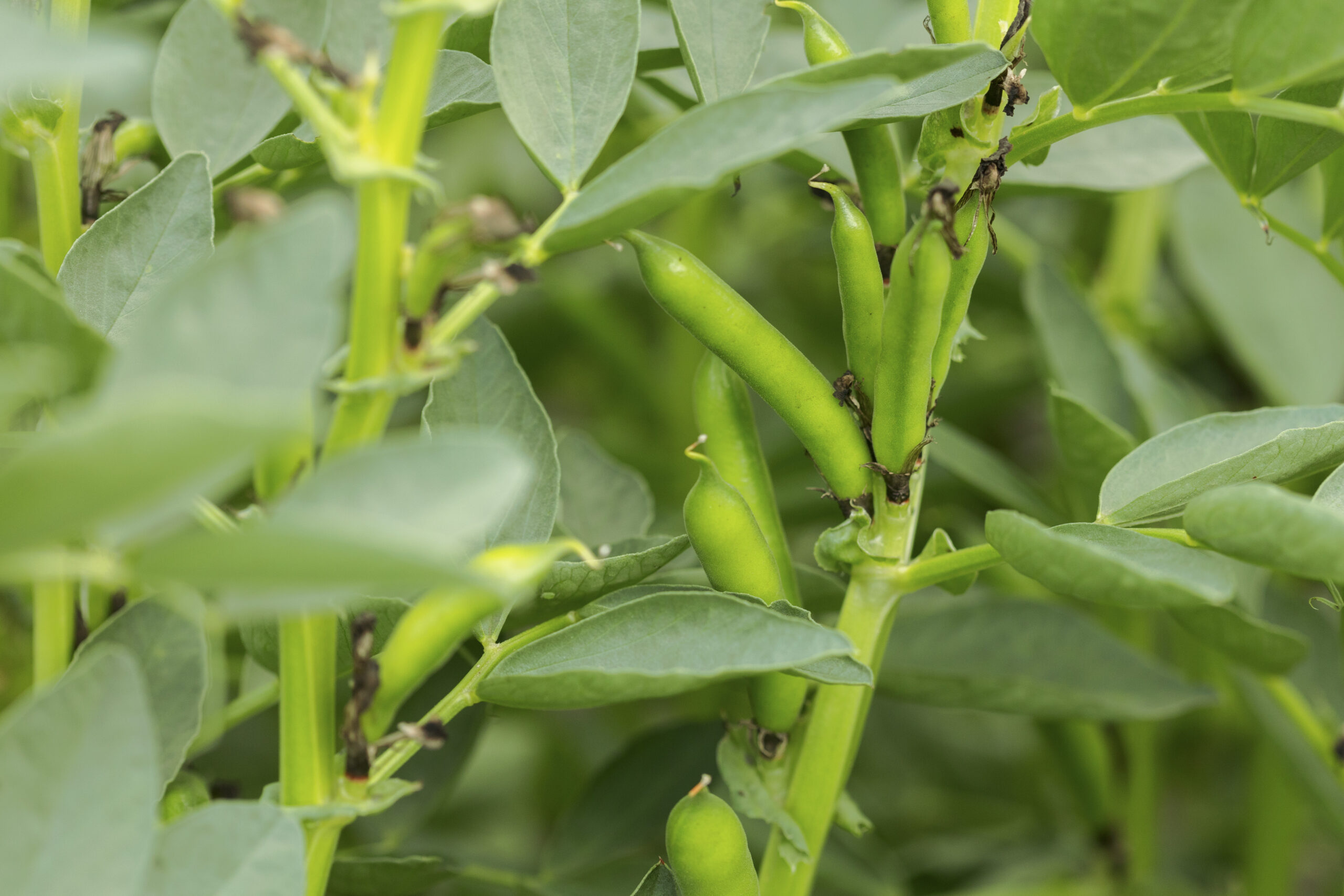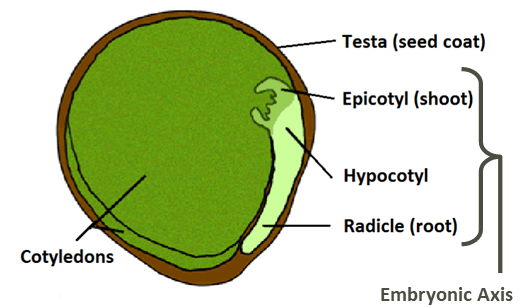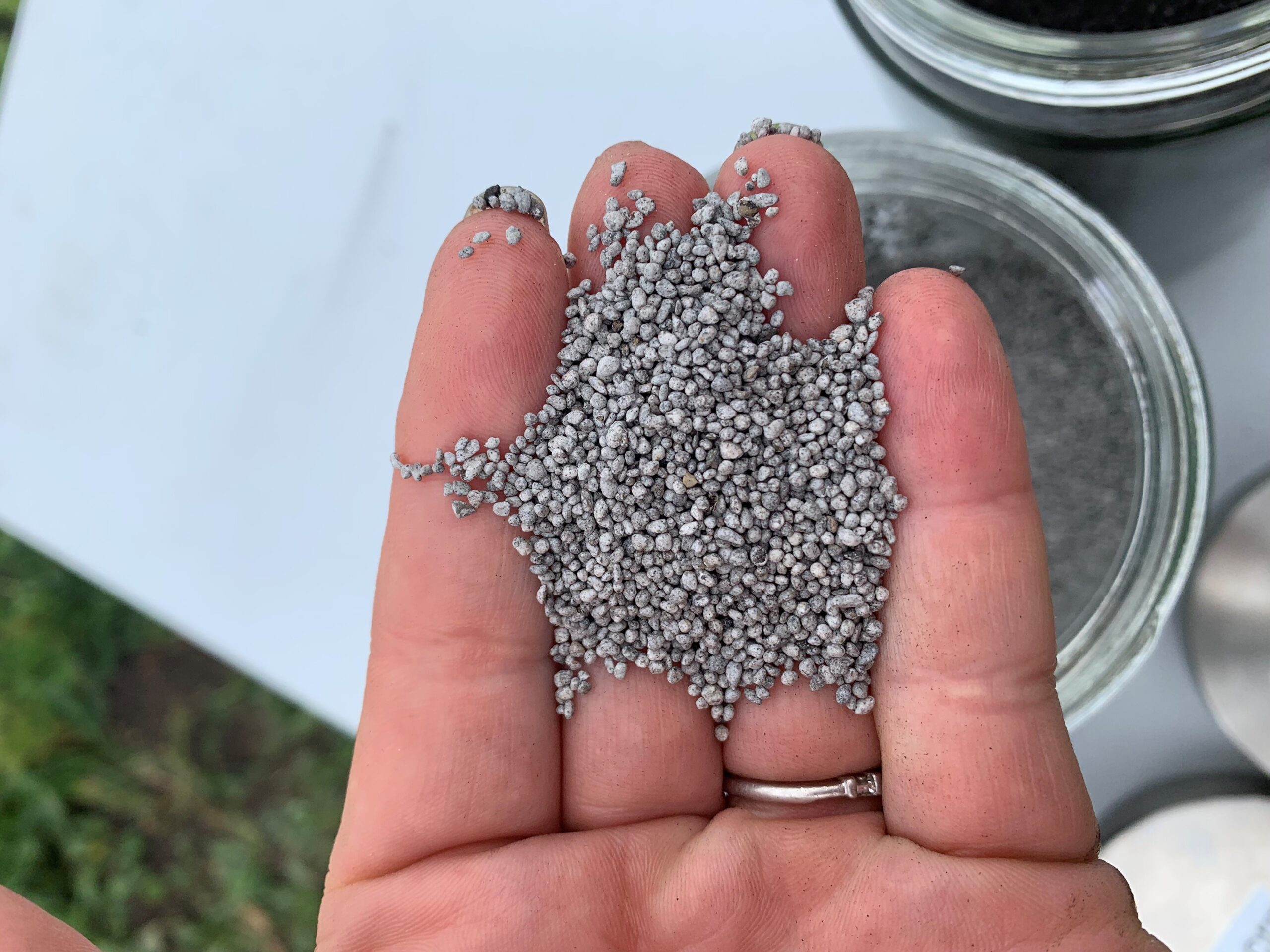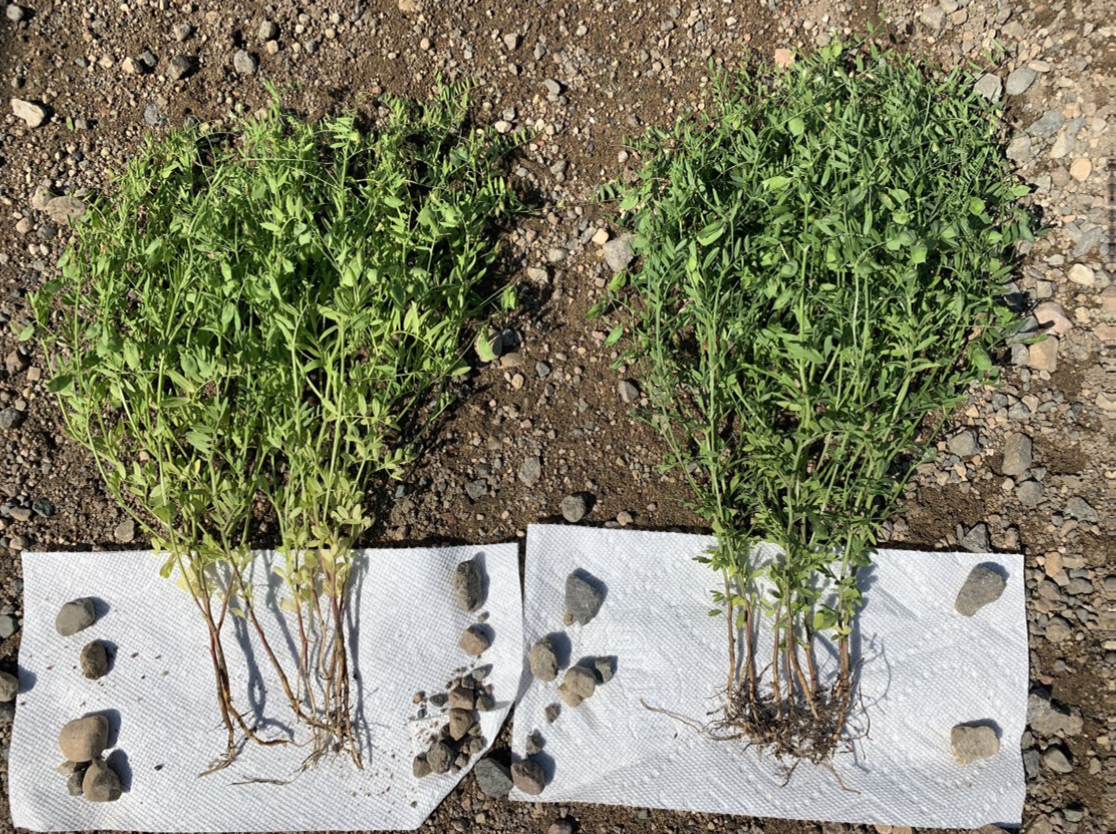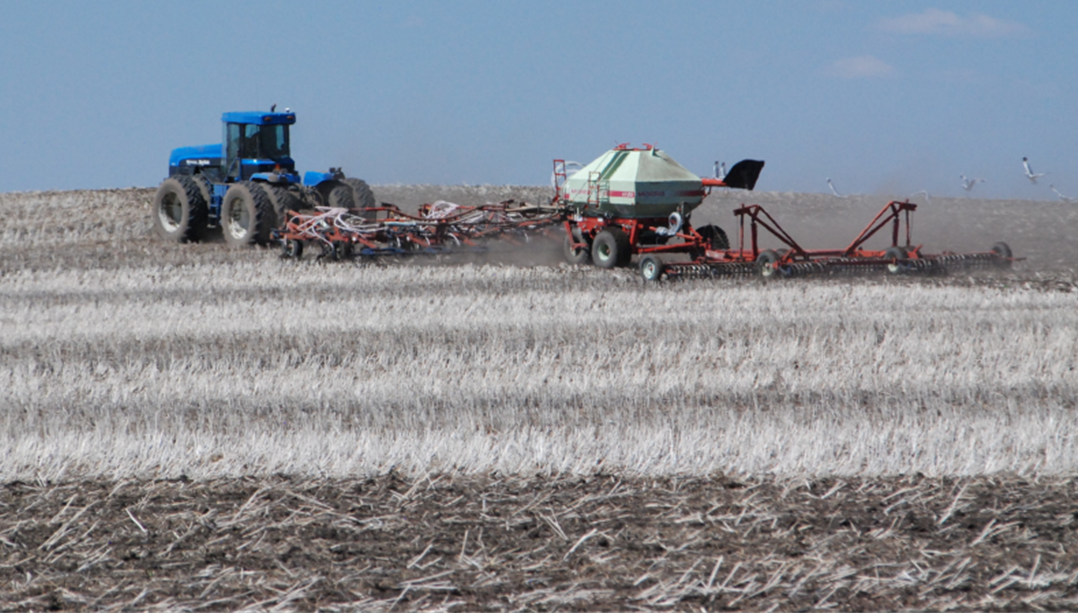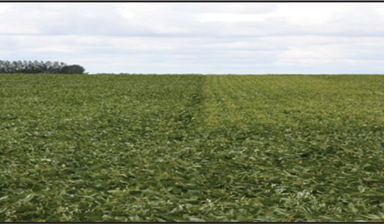Description & Adaptation
The faba bean (Vicia faba minor) is an ancient small-seeded relative of the Chinese broad bean (V. faba major). Faba beans are best adapted to the moist areas of Saskatchewan and do best under relatively cool growing conditions. Hot, dry spells result in wilting and may reduce seed set. The best adaptation area for faba beans is where growing season rainfall is at least 25 centimetres (10 inches) such as the Parkland region.
Pulse crop adaptation trials conducted at seven locations in Saskatchewan showed best faba bean yields were obtained in cool and/or wet locations. On average, the crop used 39 centimetres (15 inches) of water. Faba bean plots yielded almost 6.7 tonnes per hectare (100 bushels per acre) under ideal growing conditions.
Faba beans should be grown with caution in both the Brown soil zones and on dry, light-textured soils unless irrigation is available. Faba beans grow best on well-drained loam or clay soils of pH 6.5 to 9.0. On light, sandy soils faba bean yield can suffer because of drought stress in early summer. Although faba beans are more tolerant of saturated soils than other pulses, they do not perform well under these conditions. Faba beans do not perform well on saline soils.
Faba Bean Plant Description
- Upright plant, ranging from 1 to 1.5 metres (3 to 5 feet) tall
- Annual legume
- One or more strong, hollow, erect stems
- Strong tap root with an average rooting depth of 0.6 metres (24 inches)
- Leaves are compound with two to six oval-shaped leaflets
- Flowers can be pure white, purple, or pink and each cluster may produce one to six pods
- Pods are up to 10 centimetres (four inches) long, 1 to 2 centimetres (0.4 to 0.8 inches) wide, and contain two to eight seeds per pod
- Pods turn brown or black as they mature and seeds turn tan to brown or grey
- Oblong/oval seeds weigh between 400 to 800 grams per thousand seeds
- Flowering occurs in 45 to 60 days, and maturity in 110 to 130 days
- Bushel weight is 60 pounds
Related Resources
Varieties
There are two main market classes for faba beans: food and feed. Large seed size is an important trait for certain classes of food-grade faba beans. Faba beans grown for the food market have coloured flowers and tan to brown seed coats that contain tannins. White-flowered faba beans contain extremely low levels of tannin and are suitable as a high-protein livestock feed. Fractionation of faba bean seed into flour, starch, and protein is a developing market option that is just in its infancy. Approximately 60% of the faba beans grown in Saskatchewan are low-tannin types.
Faba bean regional trials were revived in 2006 to accommodate the growing interest in this crop as a nitrogen-fixing, high-protein feed grain. It is targeted for the areas of Saskatchewan with higher moisture, where producers experience problems with pea diseases. Variety trials are also conducted under irrigated conditions.
When reviewing variety data on faba beans, consider the following:
- Maturity is a concern, as faba beans are a long-season crop. Early varieties have the best chance of avoiding fall frost damage.
- The maturity rating is the average number of days from sowing to swathing and will be longer if seeding is delayed or if the season is cool and wet.
The varieties recommended for production under irrigation are evaluated at Outlook at the Canada Saskatchewan Irrigation Diversification Centre (CSIDC).
Long-Term Faba Bean Averages for Saskatchewan 2020
Market Class
| Market Class | Variety | Years Tested | Low Vicine/Convicine | Yield (% CDC Fatima) | Height (cm) | Lodging1 (1-9) | Maturity (Days) | Seed Weight (g/1000) |
|---|---|---|---|---|---|---|---|---|
| Coloured Flower (normal tannin) – new | Fabelled | 8 | Yes | 100 | 104 | 2.4 | 105 | 533 |
| FB9-4 | 9 | No | 87 | 95 | 3.7 | 104 | 680 | |
| CDC SSNS-1 | 10 | No | 86 | 109 | 3.4 | 105 | 355 | |
| Taboar | 5 | No | 91 | 110 | 3.7 | 107 | 480 | |
| Vertigo | 4 | No | 105 | 107 | 3 | 106 | 571 | |
| 186S-11 | 6 | No | 101 | 105 | 3.1 | 106 | 749 | |
| 247-13 | 4 | No | 102 | 103 | 3.4 | 106 | 620 | |
| White Flower (zero tannin) | Imposa | 4 | No | 105 | 99 | 2.4 | 107 | 695 |
| Snowbird | 14 | No | 100 | 95 | 3 | 104 | 448 | |
| CDC Snowdrop | 9 | No | 89 | 97 | 2.8 | 104 | 325 | |
| Tabasco | 5 | No | 96 | 93 | 1.9 | 106 | 496 | |
| DL Tesoro | 3 | No | 111 | 90 | 3.8 | 110 | 511 | |
| DL Rico | 2 | Yes | 82 | 107 | 3.5 | 109 | 566 | |
| 219-16 | 9 | No | 102 | 94 | 3.6 | 106 | 328 |
- 1Lodging score (1-9) where 1 = completely upright, 9 = completely lodged.
Related Resources
Seeding
To maximize the benefits of faba beans in your rotation, choose fields that have low nitrogen levels. Fallow fields, or fields with failed crops from the previous season, may have higher levels of available nitrogen. Available soil nitrogen levels over 55 kilograms of nitrogen per hectare or 50 pounds of nitrogen per acre may inhibit nitrogen fixation since faba beans will preferentially use the soil nitrogen rather than fixing nitrogen.
High moisture coupled with high soil nitrogen (commonly found on fallow fields) can produce excessive vegetative growth, may reduce pod set and seed production, and may delay maturity, especially for late-maturing varieties.
Faba beans are sensitive to some residual herbicides. Residual herbicides to consider with suggested recropping intervals are listed below.
Table 1: Suggested Recropping Restrictions for Faba Beans After Application of Residual Herbicide Year (or season) after Application that Faba Beans Can Be Grown
| Recropping Period | Product |
|---|---|
| 5 + years | Tordon® 22K, Grazon™ (Spot treatments or broken pasture) |
| 4 + years | Ally® Toss-N-Go (cropland), Escort® (broken pasture) (persistence is extended when soil pH is 7.5 or greater) |
| Second season after application (ex. 18 months recropping) | Muster® (Toss-N-Go / Gold II), Assert®, Everest®, Triton® C |
| Clopyralid (<123 gai/ac) (Lontrel™, Curtail™ M, Prestige™ XC, Eclipse™ III, Flaxmax®, Spectrum™) | |
| Banvel® II/Oracle® (high rates >0.5L/ac) | |
| PrePass™ (fall application) | |
| 2,4-D (high rates applied in fall) |
(Refer to individual product labels for most up to date information)
Early seeding is very important as faba beans are a long-season crop and early seeding generally results in higher yields. Seeding should take place once the average soil temperature, at the depth of seeding, has reached 3 to 5°C. In Alberta, faba bean growers generally do not plant faba beans past May 7th, due to maturity concerns.
Germination occurs when soil temperatures reach 3 to 5°C. Upon seedling emergence, faba bean cotyledons and seed coats remain below the soil surface. Faba bean seedlings can withstand some late spring frost. If the frost is severe enough to kill the main shoot, regrowth from buds at one of the nodes at or below the soil surface can occur, but maturity will be delayed.
Seeding early also advances crop maturity, reducing the probability of flower abortion associated with high temperatures at flowering. Faba beans are less tolerant than field peas of heat stress at flowering.
Related Resources
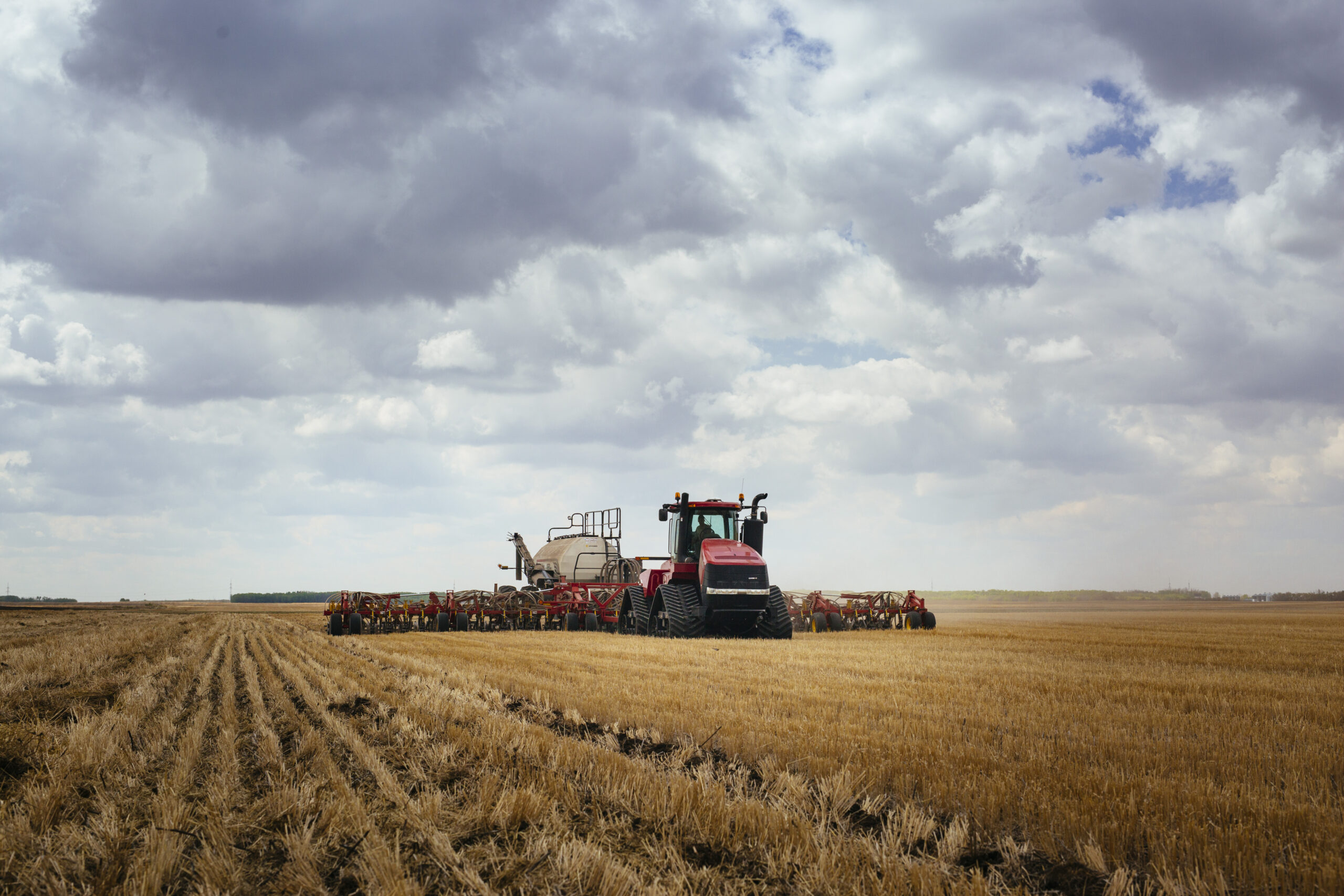
Pre-Seed and Pre-Emergent Herbicide Options for Faba Beans

Faba Bean Seed Treatment Options
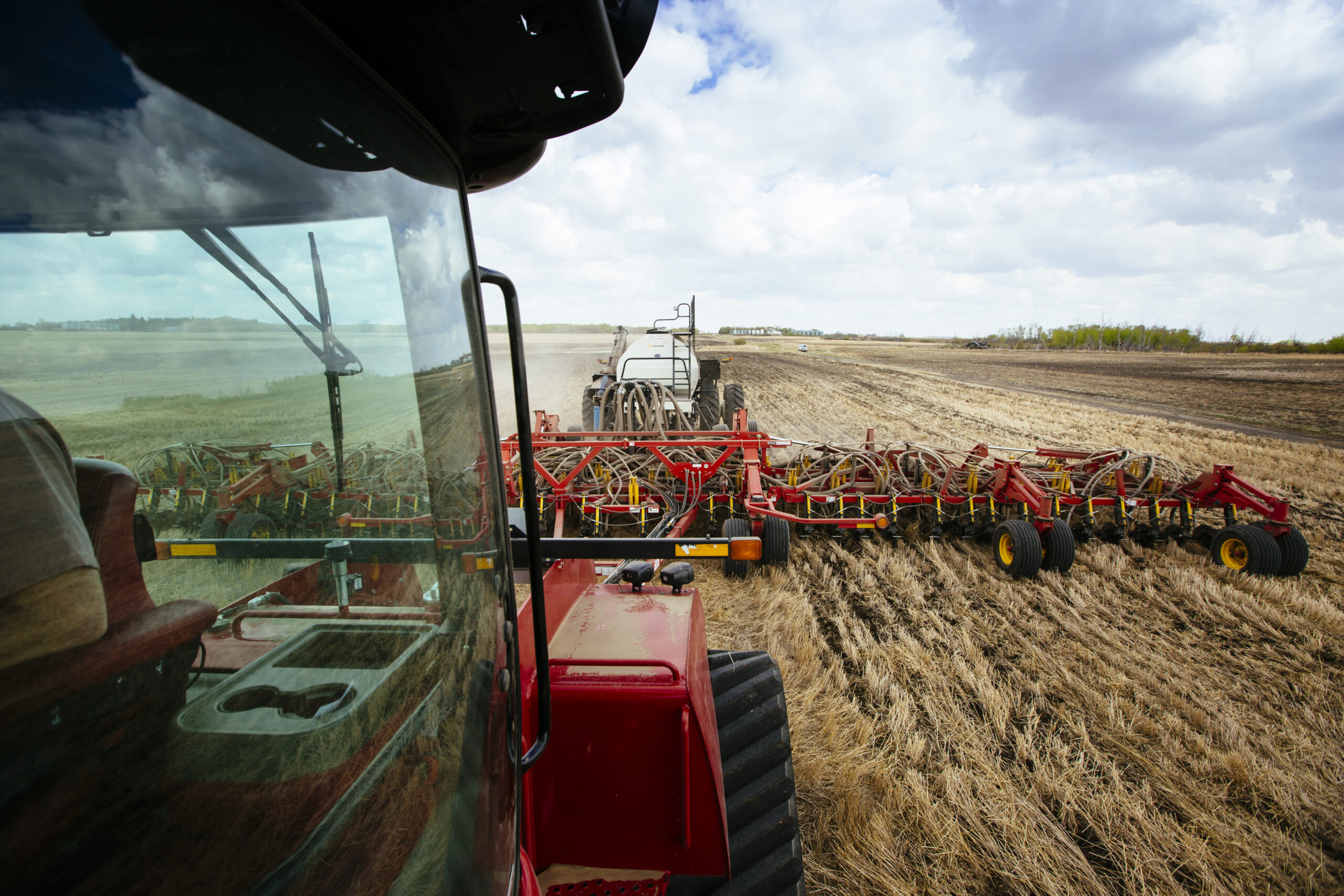
Calculating Seeding Rates
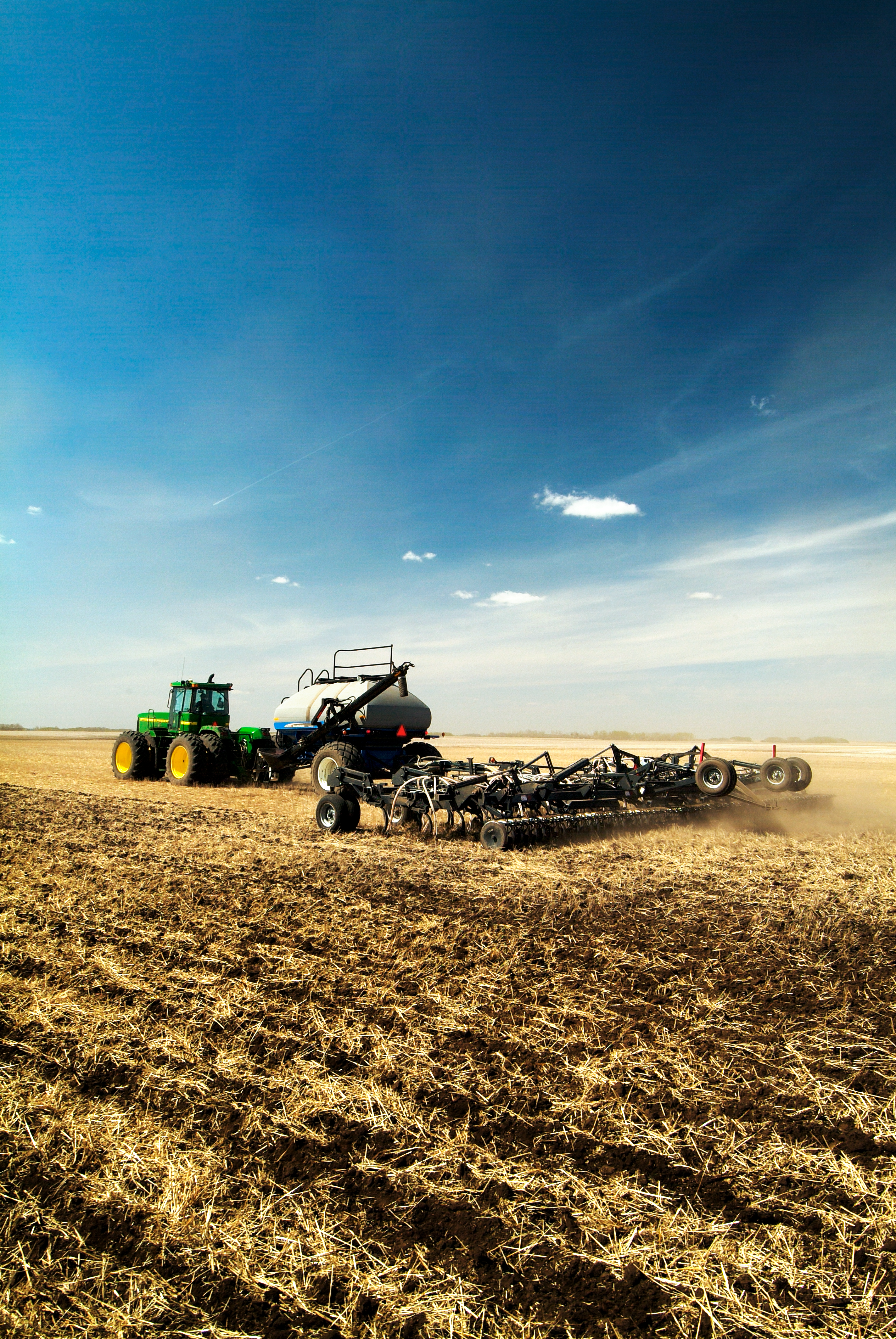
Seeding Tips For Pulse Crops
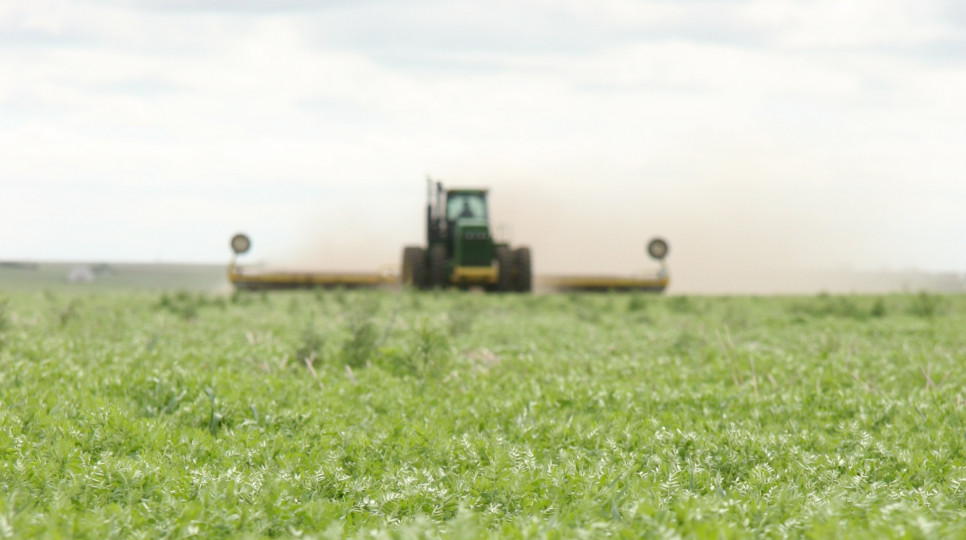
Tips for Rolling your Pulse and Soybean Crops
Inoculation & Fertility
Among prairie pulse crops, faba beans are a particularly prolific nitrogen-fixing crop, deriving up to 80% of its nitrogen requirements from nitrogen fixation. Application of nitrogen fertilizer is not recommended.
In a three-year study at Barrhead, Alberta, faba bean nitrogen fixation ranged from 70 to 223 kilograms of nitrogen per hectare (kg N/ha) or 62 to 200 pounds of nitrogen per acre (lb N/ac) depending on growing conditions. This accounted for 80% or more of its nitrogen requirements. The remaining nitrogen comes from what is available in the soil at seeding, and nitrogen that is released (mineralized) from the soil during the growing season.
Nodule formation and subsequent nitrogen fixation are very sensitive to external nitrogen sources, including fertilizer and available soil nitrogen. As the supply of external nitrogen increases, the amount of nitrogen fixation decreases. When external nitrogen levels are between 28 to 40 kg N/ha (25 to 35 lb N/ac), the addition of nitrogen fertilizer will delay and reduce nodulation. External nitrogen levels greater than 55 kg N/ha (50 lb N/ac) can prevent nodulation and nitrogen fixation.
It can take up to four weeks after planting for full nitrogen fixation to occur. During this time, growth may be inhibited, and plants may appear yellow if soil nitrogen levels are less than 11 kg N/ha (10 lb N/ac) in the top 30 centimetres (cm) or 12 inches (in). This early season nitrogen deficiency can be corrected by adding low levels of starter nitrogen at seeding. Typically, mono ammonium phosphate (i.e., 12-51-0) provides the necessary amount of nitrogen for early plant growth. Although higher levels of starter nitrogen may help the crop overcome an early-season nitrogen deficiency, final seed yields may not increase.
Faba beans are a relatively high user of phosphorus. Adequate phosphorus fertility promotes the development of extensive root systems. This benefits the plant by encouraging nodule development, thereby increasing nitrogen fixation. It also allows for better access to soil resources, improves disease resistance, and hastens maturity.
Appropriate phosphorus recommendations are best determined by a soil test. However, it is important to remember, that the maximum safe rate of actual phosphate applied with the seed is 45 kg P2O5/ha (40 lb P2O5/ac) based on 10 to 15% seedbed utilization (SBU) under good to excellent moisture conditions. Calculate SBU by dividing seed spread behind the opener by row spacing. For example, a 2.5 cm (1 in) spread with a 22.5 cm (9 in) row spacing gives 11% SBU. Rates of seed-placed phosphate fertilizer should be reduced if the seedbed has less than ideal moisture conditions. Higher rates of phosphate fertilizer placed in the seed row can harm emerging seedlings. If higher phosphate rates are required, band the fertilizer away from the seed (sideband, mid-row, or to the side and below). If side-banding is available, sideband all phosphate fertilizer, especially when using narrow openers.
Potassium is usually not required, but deficiencies may exist, especially in sandy Black and Grey soils. Fields low in potassium should be corrected based on soil test recommendations.
When potassium fertilizer is placed with the seed, use the following guidelines: the total application of phosphate (P2O5) plus potassium (K2O) must not exceed the maximum safe rate of seed-placed phosphate, which is 40 lb/ac under good-to-excellent moisture conditions.
Sulphur is required for optimum yields and should be included in the fertilizer blend based on soil test recommendations.
Sulphate-sulphur, the plant-available form of sulphur, may be used to correct S deficiencies. When ammonium-sulphate fertilizer is placed with the seed, total pounds of nitrogen from ammonium sulphate and other nitrogen-contributing fertilizers should not exceed the maximum safe rate of seed-placed urea-nitrogen.
Micronutrient deficiencies in faba bean production have not been identified as a problem in Western Canada. However, if a micronutrient deficiency is suspected, consult an agronomist to help identify the problem. It is advisable to analyze soil and plant samples within the suspect area and compare the analysis to soil and plant samples collected from a non-affected area of the same field. If the analysis confirms a micronutrient deficiency at a relatively early growth stage, a foliar application of the appropriate micronutrient may correct the problem.
